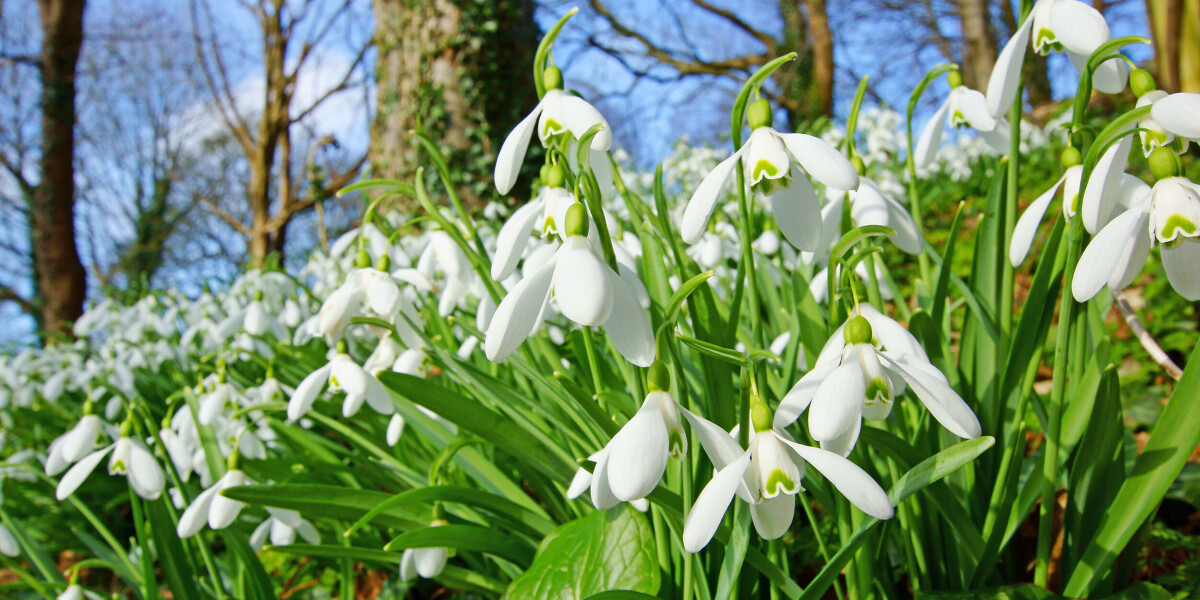
Snowdrops for hope and salvia for colour in a february french garden
- Select a language for the TTS:
- UK English Female
- UK English Male
- US English Female
- US English Male
- Australian Female
- Australian Male
- Language selected: (auto detect) - EN
Play all audios:

This year has officially been declared by Fleuroselect (the organisation in charge of such weighty matters) the year of the sage or salvia. Salvias are certainly worth celebrating. Most
kinds – from common sage to the shrubby sorts – will tolerate heavy clay as well as light and sandy soil. And they’re a joy to propagate. GROW FROM SEED OR CUTTINGS Seed of Salvia farinacea
‘Victoria’, a beautiful blue-flowered tender perennial (hardy to -4°C) is readily available and easy to germinate in February with a little heat, producing flowering plants for pots and
borders this season. Those of you in the south of France will find that it continues to produce its foliage and stems lightly dusted in white (_‘__farinose__’_, in Latin-speak) for years,
just needing to be cut back to soil level in spring. READ MORE: GARDENING HARDINESS ZONES IN FRANCE AND HOW PLANTS ADAPT TO THE COLD In fact, it has survived several winters here in cold
Lorraine on my balcony, no doubt warmed by its back to the warmer wall of the living room. Come April/May, softwood cuttings of many salvias are very easy to root with a little bottom heat.
COMPANY FOR SPRING BULBS I’m fond of the two colourful version of common sage – _Salvia officinalis ‘Purpurea’_ and _S. officinalis ‘Tricolor’_ – for planting in threes and providing groups
of foliage interest at the front of herbaceous or mixed borders. They also work beautifully as evergreens in balcony pots and troughs, providing lively winter colour in company with spring
bulbs. READ MORE: CROCUS FOCUS FOR BRIGHT FEBRUARY CONTROVERSIAL FOR VALENTINE’S DAY I will return to the sages later in the season but, however much you enjoy their evergreen foliage, it is
worth mentioning that you really should not consider adding any salvia to a homemade posy for Valentine’s Day. The Victorian ‘Language of the Flowers’ ascribes it the meaning ‘domestic
virtue’. Hands up those who wish to be singled out for their domestic virtues on Valentine’s Day? In my book a posy with sage in it – however pretty the leaf colour! – is tantamount to
giving a woman an iron or an electric mixer as a Christmas or birthday present. SNOWDROP LINK TO CRIMEAN WAR A more romantic – and timely – Valentine’s bouquet would be a small bunch of
snowdrops. I have two tiny earthenware vases reserved specifically for their enjoyment indoors and contemplating the intricate markings of the flowers at close hand certainly brings much
‘hope’ and ‘consolation’ (their meaning in the ‘Language of the Flowers’) in the darker days of February. You may already know that species of snowdrop (_‘Galanthus’_) have their
geographical centre around an area including Turkey, the Balkans, the Caucasus, and eastern Europe including Ukraine for some species such as our ‘common’ snowdrop, _Galanthus nivalis_. But
did you know that there is one vigorous and rather large-flowered species that became popular in our gardens as a result of the Crimean War? Let’s hope that modern soldiers and civilians in
the twenty-first century conflict zone are as comforted by the sight of snowdrops as British soldiers were back in the 1850s by sheets of fine Galanthus plicatus, the snowdrop indigenous to
coastal areas near the Black Sea. So inspired were those soldiers that many bulbs were brought back to be planted in British gardens (this in spite of the fact that the species had actually
been known in British gardens since the 16th century). READ MORE: THE FRENCH GARDENER INSPIRED FOR 40 YEARS BY BRITISH WINTER PLANTING _G. plicatus_ has broader leaves than _G. nivalis_ and,
when these are young, they are slightly folded under at the margins – a feature which gave its name to the species itself (‘_plicatus_’ meaning ‘pleated’). Fortunately, this is a strong,
big snowdrop that likes to hybridise and some of our most famous old cultivars are offspring of those Crimean bulbs. STRONG, RELIABLE CULTIVARS FOR FLOWERING The two strongest snowdrops in
my garden – and, by this, I mean for easy division and reliable flowering – are children of Galanthus plicatus. Fully double ‘Ophelia’ is one of the ‘Greatorex hybrids’, created by a rather
reclusive amateur botanist living in Norfolk during the 1940s, Heyrick Greatorex. Greatorex crossed pollen from the naturally occurring double form of _G. nivalis _with _G. plicatus_ (the
seed-bearing plant) to create this series of fine hybrids. Other very well-known single and strong-growing cultivars have resulted from garden hybridisation between_ G. nivalis_ and _G.
plicatus_. Particularly notable and easy to acquire are sweet-scented ‘S. Arnott’ and ‘Magnet’, whose airy grace in the garden is a result of particularly long flower stalks that allow it to
move in the smallest breeze. The second strong, reliable snowdrop in my garden – and probably my favourite, since I tend to prefer single flowers – is dark-foliaged, bold-flowered G.
plicatus ‘Warham’. This is a real Crimean War treasure since, although found in a garden in the Norfolk village of Warham, the bulbs are said to have come to us direct from the Crimea,
rather than via hybridisation in British gardens. Snowdrops are not particularly easy to purchase in France but you can bid for them on eBay.fr and find some good cultivars (including
‘Warham’) available at: www.boschhoeve.nl coolplants.com and fieldofblooms.ie RELATED ARTICLES JANUARY FLOWERS IN YOUR FRENCH GARDEN WITH SCENTED VIBURNUM MEDITERRANEAN GARDEN IN SOUTH OF
FRANCE IS A WINTER PARADISE DIY IN FRANCE: FIXING GARDEN WALL IS OPPORTUNITY TO STUDY OLD METHODS
